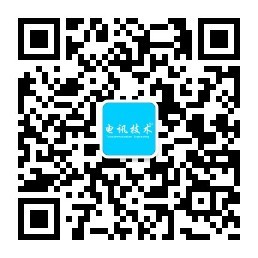| 摘要: |
| 通过使用背向散射通信技术,提出了一种用于将通信传感终端自然地融入到环境中并有效降低其重量、体积和工作能耗的树叶型环境感知设备。受到植物叶片通过叶茎供能的启发,设计了一种形状类似于枫树叶的终端天线,并通过一根伪装成叶茎的同轴线进行馈电。天线的整体形状和大小与真实的枫树叶片相似,将其安置在树梢上,通过同轴传输线与终端电路连接,实现对环境数据的隐蔽采集。电路大小约13 mm×13 mm×0.8 mm,能够很好地隐蔽于树木中。天线大小和同轴线长度均依据真实树叶以及叶茎设计,大小约48 mm×38.4 mm,用于连接并馈电的同轴线长约8 mm。由于无需自主产生用于通信的无线电信号,设备总能耗仅约50 μW。设备整体重量约1.65 g,具有轻量化、小型化、低能耗以及无需更换电池等特点。利用发射机的单频射频信号作为本振,采用低能耗微控制器获取温度传感器的数据作为基带信号,经过射频开关键控(On-Off Keying,OOK)调制并进行散射,最终由接收机解调获得环境信息。终端电路中的微控制器和传感器由太阳能电池板附着在枫树树枝上提供能源。通过将发射机、接收机和伪装的树叶环境感知设备联调,验证了该设备的可用性。 |
| 关键词: 环境感知设备 伪装树叶 背向散射通信 免电池技术 OOK调制 |
| DOI:10.20079/j.issn.1001-893x.240120001 |
|
| 基金项目: |
|
| Design of a Leaf-shaped Environmental Sensing Device Based on Backscatter Communication |
| XU Lingfeng,WANG Jian |
| (College of Electronic and Optical Engineering & College of Flexible ElectronicsFuture Technology,Nanjing University of Posts and Telecommunications,Nanjing 210023) |
| Abstract: |
| To effectively incorporate communication sensing terminals into natural conditions with a focus on minimizing weight,size,and power consumption,a novel environmental sensing device in the shape of a maple leaf is proposed.This device utilizes backscatter communication technology.Drawing inspiration from the energy supply mechanism of plants through leaf stems,the terminal antenna,which is designed to mimic a maple leaf,interacts with the reader and is energized by a coaxial cable crafted to resemble a leaf stem.The antenna搒 general form and dimensions closely mimic those of authentic maple leaves and are inconspicuously situated on the top of the tree.It is connected to the terminal circuit through a coaxial transmission line to gather environmental data.The circuit measures approximately 13.0 mm×13.0 mm×0.8 mm in size,allowing for effective concealment within trees.The dimensions of the antenna are approximately 48.0 mm×38.4 mm,and it is connected via an 8 mm-long coaxial cable.This configuration mimics the size of authentic maple leaves and stems.Given that the device does not require autonomous generation of wireless signals for communication,its total power consumption is approximately 50 μW.The total weight of the equipment is around 1.65 g,and it is characterized by compact size,light weight,low power consumption,and independence from batteries.Utilizing the single-frequency radio frequency(RF) signal of the transmitter as a local oscillator,a low-power microcontroller acquires temperature and humidity sensor data in the form of the baseband signal.The signal is modulated through RF switch control utilizing on-off keying(OOK),then dispersed,and subsequently demodulated by the receiver to retrieve environmental data.Solar panels mounted on the branches of the maple tree supply power to the microcontroller and sensors of the terminal circuit.The efficacy of the environmental sensing device is validated through a comprehensive debugging experiment that encompasses the transmitter,receiver,and a camouflaged tree leaf. |
| Key words: environment sensing device camouflage leaf backscatter communication battery-free technology OOK modulation |
